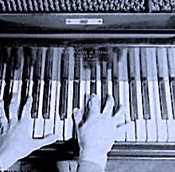
I vividly remember one of my adult students saying to me,
“Oh, I know what you do at these lessons. You have me practice all the ways you know I won’t practice at home.” I actually expected he would follow the lesson examples at home but, alas.
I spend a great deal of lesson time teaching students of all ages how to practice. I find it exceedingly important.
Some teachers don’t. They assume adult students will know how to practice. I don’t know why. Perhaps because some teachers were so young and talented when they learned their instrument they don’t understand that very few adult students share this understanding. Some teachers don’t even know how they learn; it’s so automatic they just do it.
I find age makes no difference in practice techniques. Practice methods are determined by the needs of the piece and particular talents and limitations of student. There are no “elder” practice techniques that I know of.
Finding a favorite practice technique and doing only that ultimately fails. Variety is essential to remain mentally involved. Practicing should not be boring.
For experienced students, the most useful practice suggestions may be ones they have forgotten or not considered in the current context. Knowing how to practice in the moment takes great understanding and self-awareness. I find it much easier to tell my students how they should practice than I do to tell myself how to practice.
Information about practicing techniques is copiously available in books and on the web. Interestingly, some of the suggestions conflict with others. This only confirms the Socratic need to “know thyself”, even at your instrument of choice.
A favorite piano practice technique of mine, not often mentioned elsewhere, is practicing the single notes of the melodic and bass lines together (leaving out any interior notes). Doing this with one finger of each hand (best is the thumb, fourth or fifth finger) is most effective. It is like playing just the violin and cello parts of a symphonic work. In fugues, the same technique works well with all combinations of two voices. This technique focuses the mind on the counterpoint present in pieces and reminds the body that the way the arms move is as important as the way the fingers move.
Practicing technique should be very effective in improving the piece. If not, be sure to practice regularly. Be sure to be fully attentive and to count. Be sure the fingering works well and is consistent. Don’t repeat errors. If that happens, carefully analyze what’s wrong so as to understand the error and not repeat it ad nauseam.
